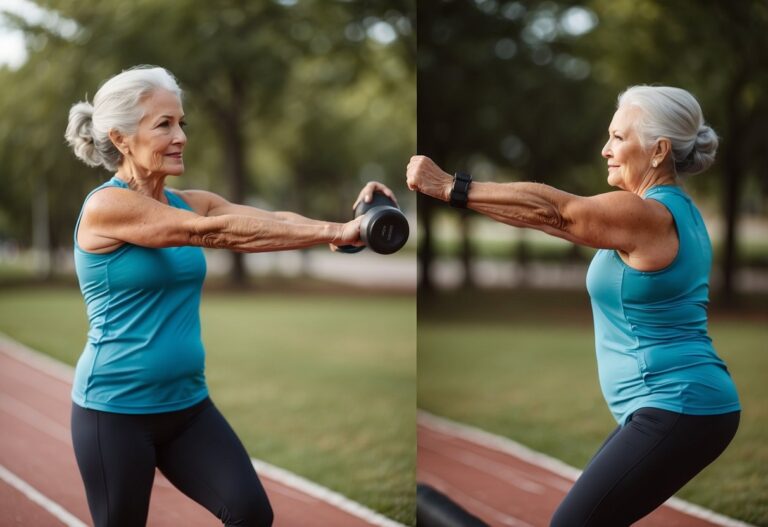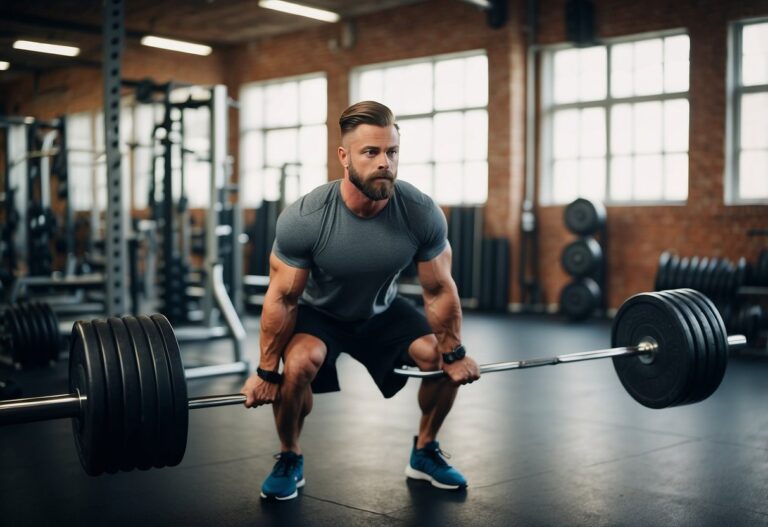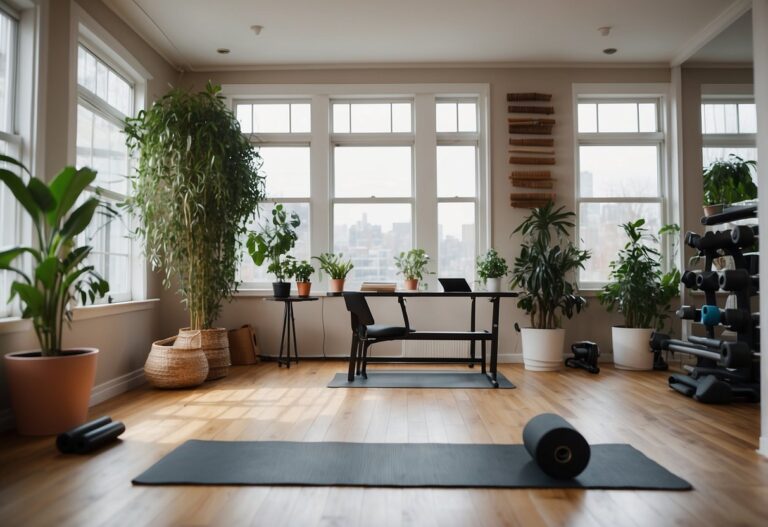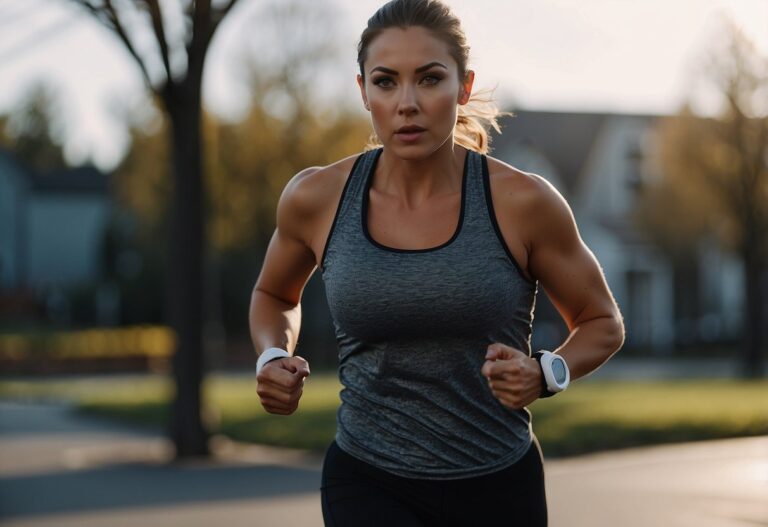When it comes to working on your upper body, you might wonder about the best exercises and techniques to achieve your fitness goals. Developing a strong upper body not only improves your overall appearance but also enhances your daily functional strength, making it easier to perform everyday tasks.
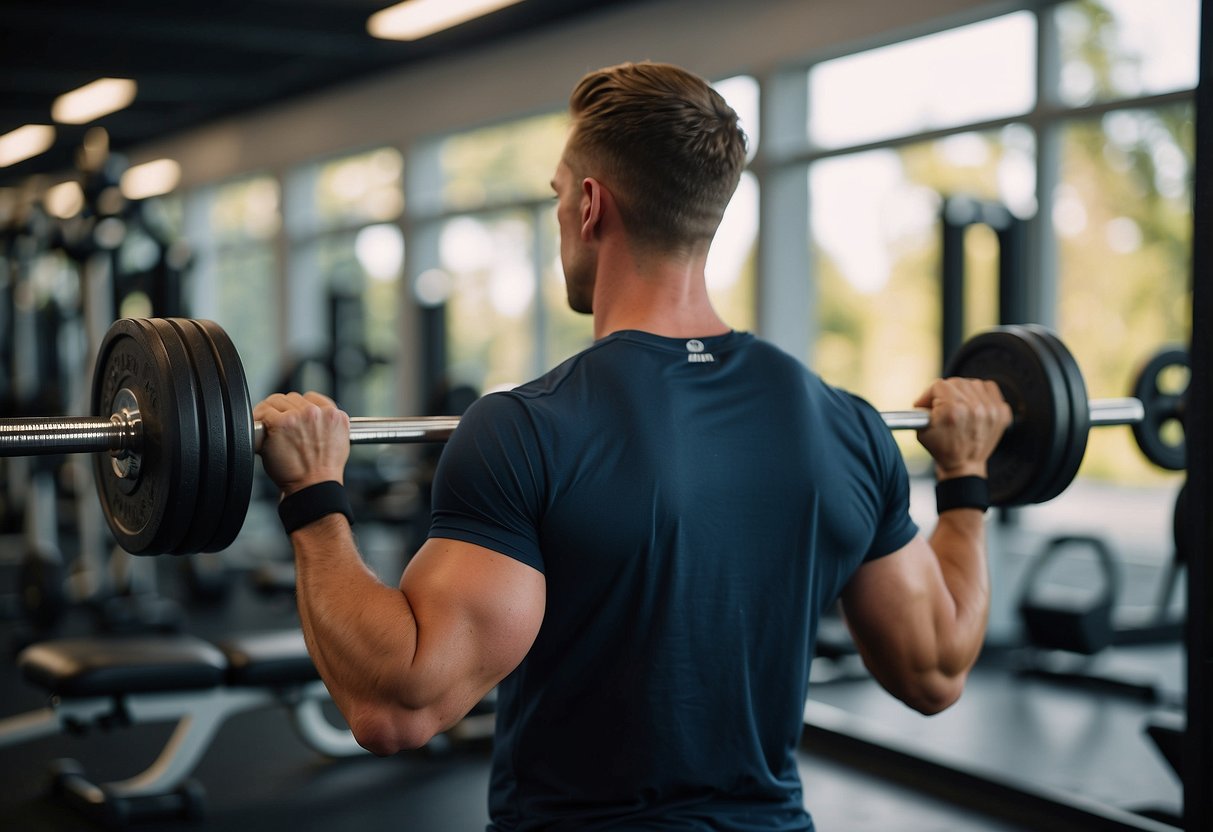
One of the fundamental aspects of designing an effective upper body workout is to ensure a balanced approach that targets all major muscle groups. This means incorporating exercises that work your chest, back, shoulders, and arms. By following a well-rounded routine and understanding the right techniques, you can maximise your workout results and build a stronger, more defined upper body.
Push-ups
Push-ups are a great way to build upper body strength. Start in a high plank position with your palms flat on the floor. Keep your hands shoulder-width apart. Make sure your shoulders are above your wrists. Engage your core and glutes.
Lower your body by bending your elbows. Your elbows should be at a 45-degree angle. Don’t let them flare out too much. Your hands should be in line with your sternum.
As you lower yourself, keep your chin tucked. Look down rather than straight ahead. This keeps your neck in a neutral position and avoids strain.
If you find standard push-ups too difficult, you can try easier variations. For example, start with your knees on the ground. This decreases the weight you need to lift.
To increase your push-up strength, use negative reps. Slowly lower yourself to the ground, focusing on control. This method helps build strength gradually.
For a new challenge, try more advanced variations. Push-up modifications, like diamond push-ups, add difficulty. They target different muscle groups and improve overall strength.
Remember, consistent practice is key. Incorporate push-ups into your regular workout routine. Even a few sets a day can make a big difference.
Pull-ups
Pull-ups are an excellent exercise for building upper body strength. They work your back, shoulders, biceps, and core. If you’re new to pull-ups, don’t worry—you can start with a chin-up bar at home.
Try to aim for 2 sets of 8 reps to begin with. If you can’t do a full pull-up yet, use a chair to support your feet. Gradually, you’ll build the strength needed to do them unaided.
Arnold Schwarzenegger often included 50 pull-ups as part of his warm-up routine on upper body days. This routine can motivate you to add pull-ups into your workout plan.
Focus on form. Keep your core tight and avoid swinging. This ensures you’re using the right muscles.
Pull-ups aren’t just for advanced athletes. They can be adapted to suit your fitness level. Variations like scapular pull-ups can make them more accessible.
Dumbbell Shoulder Press
The dumbbell shoulder press is a fantastic exercise to target your shoulder muscles. It is ideal for building strength and adding definition to your upper body.
To perform the exercise, stand with your feet shoulder-width apart. Hold a dumbbell in each hand at shoulder level, with your palms facing forward. Your core should be engaged to keep your back straight.
Press the dumbbells overhead until your elbows are fully extended. Lower them back down to shoulder level in a controlled manner. This helps to maximise muscle engagement and minimise the risk of injury.
Sitting on a bench with a backrest can provide additional support if you have lower back issues. Adjust the pad of the bench to a high angle and press your back firmly against it.
Incorporate the dumbbell shoulder press into your workout routine with 3 sets of 6-10 repetitions. Consistency is key to seeing results.
Lat Pulldowns
Lat pulldowns are essential for building a strong back. They target the latissimus dorsi muscles, making your back look wider and more defined.
Start by sitting on the lat pulldown machine. Secure your thighs under the pads to stay stable.
Grasp the bar with a wide grip. Pull it down to your chin while keeping your chest up and back straight.
Remember to inhale as you release the bar back up. Aim for slow, controlled movements to maximise muscle engagement.
Incorporate lat pulldown variations into your routine. Try different grips and positions for a complete back workout.
Bent-over Rows
Bent-over rows are a fantastic exercise for building a strong upper body. They target your back muscles, especially the lats and the traps.
Stand with your feet shoulder-width apart. Bend at the hips, keeping your back straight and knees slightly bent.
Grip the barbell and pull it towards your stomach, squeezing your shoulder blades together. Make sure your core is engaged to protect your lower back.
To add variety, try single-arm rows or underhand grip rows. These variations can help you work different muscles and keep your workouts interesting.
For more details on how to do bent-over rows, visit Women’s Health.
Chest Dips
Chest dips are a fantastic exercise for building a stronger upper body. By leaning forward slightly, you can focus more on your chest muscles. This exercise also strengthens your shoulders and triceps. Chest dips use your body weight, making them a great addition to any workout routine.
To do chest dips, start by grasping parallel bars. Lift yourself up and lean your torso forward. Lower your body until your elbows form a 90-degree angle, then push back up. Keep your movements controlled and steady for the best results.
If you’re new to dips, try using assisted dip machines at the gym to build strength.
Dumbbell Flyes
When you do dumbbell flyes, you target your chest muscles effectively. This exercise is great for building upper body strength.
To get started, lie on a flat bench with a pair of dumbbells. Hold them above your chest with palms facing each other. Keep a slight bend in your elbows.
Slowly lower the dumbbells to the sides with control. Feel your chest stretch. Then, bring them back up to the starting position. Remember to keep your feet flat on the floor. This ensures balance and stability.
For a variation, you can try the standing dumbbell fly. It works your upper body, including the pectoralis major. If you want to target the upper pecs specifically, use an incline bench. Set the angle between 30-45 degrees.
Engaging in these exercises can help you achieve a stronger, more defined chest.
Tricep Dips
Tricep dips are a fantastic way to build your upper body strength. They primarily target your triceps, but also work your chest and shoulders. You’ll need a sturdy chair or weight bench.
Place your hands shoulder-width apart on the edge of the chair. Stretch your legs out in front of you with heels on the ground.
Lower your body by bending your elbows until they’re at a 90-degree angle. Push yourself back up to the starting position. Make sure to keep your core engaged and shoulders down.
If you’re looking for a challenge, lift one leg off the ground or place your feet on another chair. This adds more intensity to the workout, giving you even better results.
Plank
The plank is a simple yet effective exercise for building upper body strength. Begin by positioning yourself face down with your forearms and toes on the floor. Make sure your elbows are directly under your shoulders. This setup will help engage your muscles correctly.
To hold a plank, draw your navel towards your spine and keep your body straight. Imagine a line running from your head to your heels. This helps ensure your hips don’t sag or lift too high.
For a beginner, aim to hold the plank for 20 seconds. You can gradually increase this time as you get more comfortable with the exercise. Proper form is key to avoiding injury and getting the most benefit.
You might notice your body shaking as you hold the position longer. This is normal and shows that your muscles are working hard. Keep practising and you will see improvements in your endurance and strength.
To make it more interesting, try different variations like side planks or plank with leg lifts. These variations can add a new challenge and work different muscle groups. For more detailed steps, you can check out Greatist’s guide on how to do a plank.
Using planks in your workout routine can help you build a strong core and upper body. Remember, consistency is key. Stick with it and you’ll soon notice the difference.
Seated Cable Rows
Seated cable rows are fantastic for building a strong back. They target your latissimus dorsi and the rhomboid muscles between your shoulder blades. Your trapezius muscles along the back of your neck and upper back also get a good workout.
To perform this exercise, sit down and grasp the cable handle with both hands. Keep your back straight and legs slightly bent. Pull the handle towards your torso, squeezing your shoulder blades together.
Don’t let your shoulders hunch over. Instead, use your back muscles to pull the weight back. This exercise can help improve your posture and contribute to a well-rounded upper body.
Proper Warm-Up Techniques
Warming up properly before an upper body workout can enhance your performance and minimise the risk of injury. Effective warm-ups increase blood flow and prepare your muscles for exercise.
Importance of Warm-Up for Upper Body
A proper warm-up is crucial. It helps to increase your body temperature, which improves muscle elasticity, reducing the chances of strains.
By warming up, you also boost your mental focus. This is essential for workouts that require precision, like weightlifting or resistance training.
Think about how you feel before starting a workout when you’re cold versus after a good warm-up. The difference in mobility and readiness is significant.
Effective Warm-Up Exercises
Choose warm-up exercises that target the muscles you plan to use during your workout.
Band Pull-Aparts – Hold a band straight out and pull it apart, squeezing your shoulder blades. This helps activate your shoulders and upper back. Perform 10-20 reps. Find more details about band pull-aparts here.
Lateral Arm Swings – Swing your arms across your body and back again to loosen the shoulder joints. Do this for 30 seconds.
Chest Stretch – Extend your arms horizontally and grasp a stable object, pulling your shoulder blades back and down to stretch your chest. Hold for 10-30 seconds. Learn more about this stretch here.
All-Fours Position Core Activation – Get on all fours with wrists under shoulders and knees under hips. Lift your knees slightly to engage your core and improve stability. This exercise is detailed further here.
Remember, these exercises should be done slowly and with control to maximise effectiveness.
Optimising Your Upper Body Workout Form

To get the best results from your upper body workouts, it’s crucial to use proper form. This not only helps in preventing injuries but also ensures you target the correct muscles effectively.
Common Form Mistakes to Avoid
When working on upper body exercises, common form mistakes can hinder your progress. Rounded shoulders during exercises like bench presses can stress your joints instead of your chest muscles. Ensure your shoulder blades are retracted to keep tension on your chest and relieve pressure on your shoulders.
Another mistake is using too much weight, leading to poor technique and risking injury. Start with a manageable weight and increase gradually while maintaining good form.
In bicep curls, swinging the weights or using your lower back might feel easier but doesn’t work the biceps effectively. Keep your elbows close to your torso, and focus on a deliberate, controlled motion.
Key Techniques for Maximum Efficiency
Maintaining a neutral spine is key in almost all exercises. Whether you’re doing push-ups, rows, or overhead presses, keep your back flat and avoid arching or rounding it.
When performing a bench press, keeping your feet planted firmly on the ground adds stability and helps generate power from your lower body up to your chest.
In pull exercises, like rows, think about pulling with your elbows rather than your hands. This helps engage your back muscles more effectively and reduces the use of arm muscles wrongly.
For shoulder presses, ensure you start with the weights at shoulder height with your palms facing forward. Press upwards without locking your elbows at the top.
By focusing on these techniques, you can maximise your workouts and achieve better results safely.
Recovery and Injury Prevention
It’s important to take steps to recover from your workouts and prevent injuries. This involves stretching after your workouts and recognising the signs of overtraining early on to avoid bigger problems.
Post-Workout Stretching
Stretching after you finish exercising can help your muscles relax and reduce soreness. It increases your range of motion, making everyday activities easier. For example, hamstring stretches can reduce tightness in the back of your leg.
To stretch, you should hold each position for about 30 seconds. This gives your muscles time to lengthen and adjust.
Here’s a simple routine you can follow:
- Quadriceps Stretch: Stand and pull one heel towards your buttocks.
- Hamstring Stretch: Sit on the floor, extend one leg, and reach towards your toes.
- Chest Stretch: Stand in a doorway, place your hands on the frame, and lean forward gently.
Stretching regularly helps improve flexibility and can lower the risk of injury. If you skip this part, you may feel tighter and sorer the next day.
Signs of Overtraining
Overtraining happens when you work out too much without giving your body time to rest. If you’re constantly tired, it could be a sign you’re pushing too hard.
Common signs include:
- Persistent Muscle Soreness: If your muscles don’t stop feeling sore, you might need more rest.
- Increased Injuries: More frequent sprains or strains.
- Mood Changes: Feeling irritable or down.
To prevent overtraining, ensure you have rest days in your routine. Follow a varied workout plan that balances intense sessions with lighter activities. If you start to notice signs of overtraining, take a break and allow yourself to recover. Listen to your body—rest is just as important as exercise.


